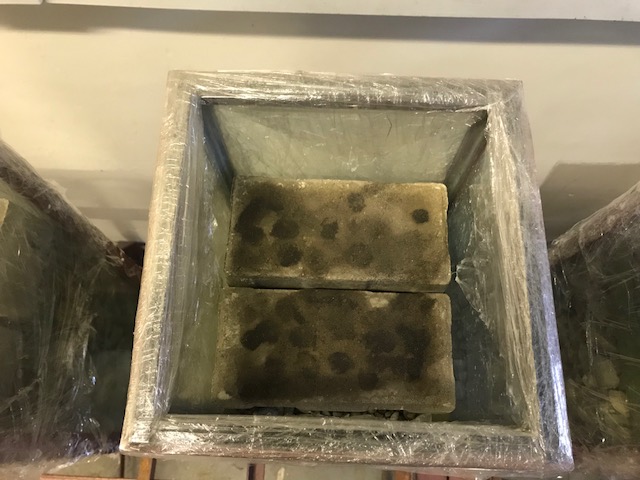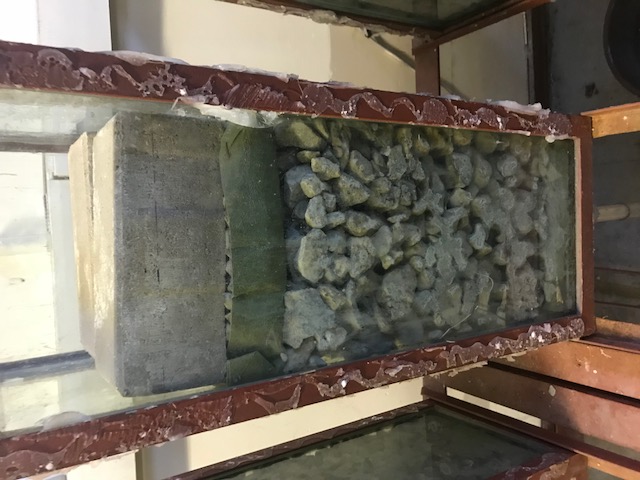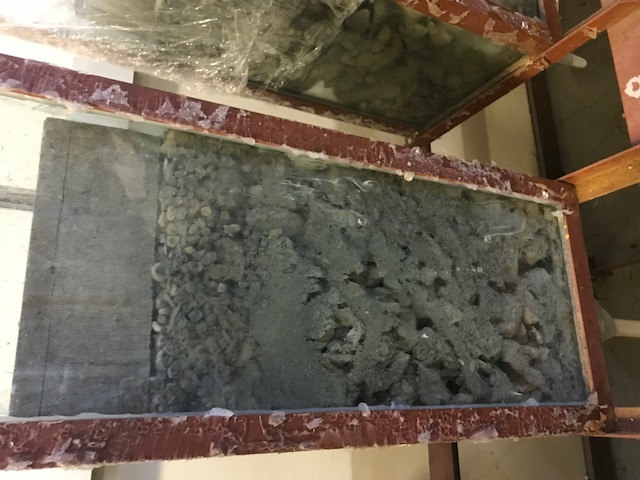
Water quality performance of permeable pavements
Funder
Formpave
Value
£21,000
Project team
Duration of project
September 2016 – April 2017
Project objectives
- To simulate the deposition of urban contaminants such as oils and metals from transport processes onto the surface of pervious pavements.
- To apply artificial rainfall onto the pavement surface to mobilise the contaminants and flow through the pavement structure.
- To measure the level of contaminant retention in the pavement depending upon the design. This design difference is primarily the presence or absence of a geotextile filter fabric to remove particles and chemicals.
- To assess the levels of biological treatment, of the organic contaminants such as oils, in each design.
Impact statement

Applied oil deposited on the surface of a permeable pavement in the SUDS lab.

A pervious pavement with a geotextile below the pavement surface for filtering of contaminants.

Pervious pavement with no geotextile filter fabric.




